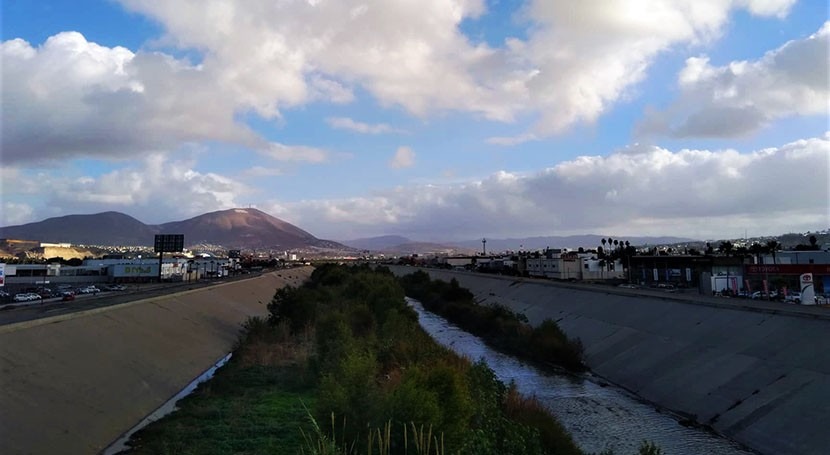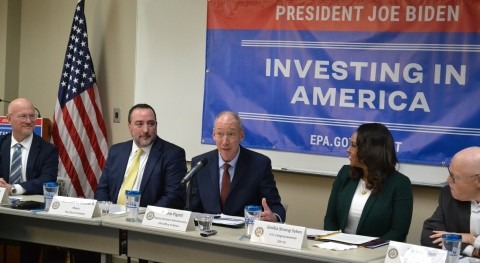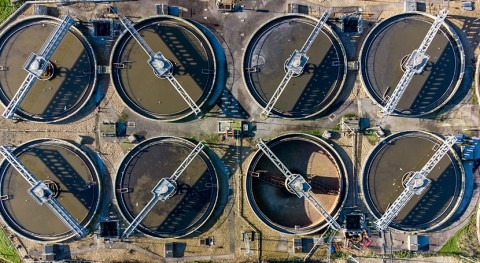Last week the U.S. Environmental Protection Agency (EPA) Assistant Administrator for Water Radhika Fox announced the decision to move forward with the environmental review of a suite of water infrastructure projects that, pending final selection, would address transborder water pollution. This action will lead to essential public health protections for San Diego County communities.
“In order to protect public health and vital ecosystems in this vibrant area, we need a bold solution to the transboundary water pollution challenge,” said EPA Assistant Administrator for Water Radhika Fox. “Today, we’re announcing our intent to pursue a holistic water infrastructure strategy to address multiple facets of this challenge and make real progress for the future of the San Diego region.”
“The projects considered in the EPA plan for the sanitation of the Tijuana River basin will significantly improve the quality of water in this river and on the beaches of both countries. CONAGUA, in accordance with the budget allocated to it, will provide its support for the completion of sanitation projects on the Mexican side that contribute to the fulfillment of that objective.” said Dr. Humberto Marengo Mogollón, head of the General Technical Subdirectorate in CONAGUA.
EPA is initiating environmental review of the following projects that have the highest potential to stem transborder pollution and improve water quality:
- Expanding the existing South Bay International Wastewater Treatment Plant (ITP) owned and operated by the U.S. International Boundary and Water Commission (IBWC);
- Diverting and treating Tijuana River water at a new facility adjacent to the existing ITP;
- Conveying canyon flows to the expanded ITP;
- Repairing portions of the collection system in Mexico to prevent sewage leaks;
- Beneficially reusing treated wastewater instead of discharging it into the Tijuana River;
- Installing a river trash boom; and
- Constructing a new San Antonio de los Buenos Treatment Plant in Tijuana.
- As EPA completes its assessment of infrastructure options, a National Environmental Policy Act (NEPA) review will move forward to reduce potential negative environmental impacts from the projects that make up the comprehensive solution. This legally mandated review is needed before design and construction can begin.
“We thank the public and federal, state, and local stakeholders who have provided valuable input during the project evaluation process, particularly through the seven meetings of the Eligible Public Entities Coordinating Group and six meetings with the public since June 2020,” said EPA Pacific Southwest Acting Regional Administrator Deborah Jordan.
“For far too long, toxic waste and raw sewage has flowed across the border into Southern California, polluting our air and water and depriving communities of outdoor recreation and economic opportunities” said U.S. Senator Alex Padilla. “I’m glad we were able to work with the EPA to develop a comprehensive plan to improve sewage treatment in both San Diego County and Tijuana, and build upon the goals of the Border Water Quality Restoration and Protection Act, which I joined Senator Feinstein in introducing earlier this year. It is essential that we take action to protect the health and safety of our coastal communities.”
“Communities along California’s southern border have been plagued with toxic pollution from Mexico for too long, in part because no single agency was responsible for the issue,” said U.S. Senator Dianne Feinstein. “I’m pleased to see EPA Administrator Regan take leadership on this issue and invest in these vital projects to clean up border pollution. These projects will help significantly improve the health and quality of life for our border communities.”
“This decades-long problem is an environmental and public health catastrophe that endangers lives on both sides of our border, from the waters of Baja California to my district in Coronado,” said U.S. Representative Scott Peters. “I thank Administrator Regan for accepting my invitation to see this crisis in person earlier this year, and the EPA for proposing bold solutions. I remain committed to solving this crisis.”
“Pollution along the Tijuana River Valley has plagued our region for years, harming our environment, public health, and our local economy. It’s long past time we stop the flow of this pollution from Mexico for good,” said U.S. Representative Mike Levin. “I commend the EPA for advancing an aggressive and comprehensive solution to this crisis. Now it’s paramount that we move forward as quickly as possible to break ground on this project. I’ll continue to work with my colleagues to ensure the EPA has the resources it needs to finish the job.”
“Clean water is fundamental to the health of our community and that is true on both sides of the border. It is encouraging to see the EPA present a comprehensive plan to address the decades-long issue of pollution in the Tijuana River Valley and I am proud to have worked with my colleagues to raise this issue with federal officials,” said U.S. Representative Sara Jacobs. “Now it is important for the agency to move forward with projects that will protect our communities and for us in Congress to continue to perform oversight and provide any necessary legislative actions.”
“The EPA’s comprehensive solution will help address the impacts of transboundary flows through the Tijuana River Valley and into the Pacific Ocean," said U.S. Representative Juan Vargas. "These impacts have created an environmental health crisis, closing beaches and affecting residents and wildlife in San Diego’s border region. I stand ready to support future budget requests to help reverse those impacts and make this project a reality.”
“The San Diego region has been plagued by cross-border pollution for decades, posing a significant risk to human health and resulting in beach closures and degraded wildlife habitats,” said San Diego Mayor Todd Gloria. “I appreciate the U.S. Environmental Protection Agency’s work throughout the United States–Mexico–Canada Agreement process, which has further demonstrated the need for long-term, comprehensive investments. That’s why this announcement today is welcome news that will move us even closer to solving this public health and environmental crisis.”
“I am deeply grateful to the EPA for supporting a comprehensive plan that will help to resolve the decades long Tijuana River sewage crisis,” said Imperial Beach Mayor Serge Dedina. “This far-reaching plan will involve significant sewage infrastructure fixes on both sides of the U.S.-Mexico border so that residents of Imperial Beach, Coronado, South San Diego County and Tijuana have access to clean beaches year-round.”
Congress appropriated $300 million for infrastructure to address transborder pollution in 2020 through the U.S.–Mexico–Canada Agreement (USMCA) implementing legislation. While the overall cost of the comprehensive solution exceeds the appropriated amount, EPA will implement a phased approach in the design and construction of the various infrastructure projects. EPA will continue to engage the public and stakeholders during the NEPA review process and will work with our counterparts in Mexico to ensure binational support for the comprehensive solution.



















